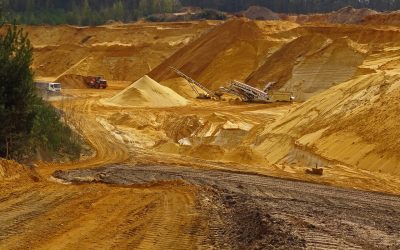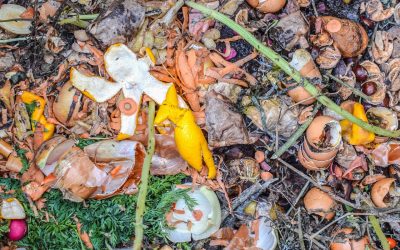In light of a push for sustainability, concrete recycling has become more common since the 1980s. By finding ways to safely reuse materials, construction waste is reduced and less strain is placed on resources. Let’s take a look at recycled concrete aggregate and how it’s paving the way for sustainable construction practices.
What Is Recycled Concrete Aggregate?
Recycled concrete aggregate, often abbreviated to RCA, is also known as “crushed concrete.” This name sums up what RCA material is: crushed asphalt and concrete debris that has been screened, cleaned, and reused in future sustainable construction projects. RCA concrete is most often sourced from demolition waste.
When concrete is removed from its previous use as part of a new construction project, it was historically dumped into landfills. Because concrete is not biodegradable and will not decompose, it takes up a significant amount of landfill space.
Instead of simply hauling the old concrete off to dump in a landfill, aggregate manufacturers are finding ways to recycle it that offer many benefits.
Screen recycled concrete more efficiently with AEI’s aggregate screening solutions.
Benefits of Recycling Concrete
Recycled concrete aggregate offers many benefits:
- It keeps concrete debris out of landfills, extending their longevity.
- It puts less strain on natural resources (like sand, gravel, and crushed stone) used to create new concrete.
- Reduces costs, since new material doesn’t need to be mined. Plus, concrete disposal fees can be avoided.
- Recycling concrete typically requires less energy compared to mining, processing, and transporting virgin aggregates.
- Overall, recycled crushed concrete reduces environmental impact.
Concrete recycling is a highly sustainable practice that can have a long-term positive impact on the environment.
How Is Recycled Concrete Aggregate Made?
RCA begins as old concrete that has been removed from its original source. This usually occurs when a roadway or sidewalk is being replaced, but there are other sources for concrete recycling. Once the recycled concrete has been sourced, it can be processed. This starts with crushing.
RCA is first crushed using industrial equipment. This step in the process breaks up the original structure, reducing it from larger slabs into a granulated material. After the concrete is crushed, it’s then run through another impactor. At this stage, the RCA is closer to a sand-like material than a sidewalk.
After being crushed to an even smaller size, the recycled concrete must then be screened so that dirt and other foreign objects can be removed. After this step, the concrete is separated out by size.
The Profit Potential of Recycled Concrete Aggregate
According to the most recent data, the recycled concrete aggregate market is estimated to total over US$ 9 billion in 2023. From 2023 through 2033, this market is expected to grow by an 8% compound annual growth rate (CAGR). Pressures to decrease carbon footprints and the wider adoption of sustainable building practices is expected to spur this growth over the next decade.
How Is RCA Used?
Both processed and unprocessed RCA have a wide range of sustainable construction uses.

Unprocessed RCA, that is, recycled concrete that has only been crushed and not screened, is often used as a subbase material. Unprocessed RCA material is also used as a filler, for example as:
- Banks protection or retaining walls
- An alternative to gravel in drainage ditches
- Sound barrier embankments
- Subbase material for road and pavement construction
Meanwhile, RCA that has been further processed is used as part of a new concrete mix. It’s then used as a traditional construction cement in:
- Roadways
- Sidewalks
- Curbs
- Bridge and other structural foundations
Outside of construction, recycled concrete is sometimes sold to consumers for use in landscaping, much like gravel.
The Importance of Screening RCA
Compared to natural aggregates, recycled concrete may exhibit lower compressive strength and durability as well as higher absorption and porosity. But with proper processing and quality control measures, RCA can be improved.
During screening, the recycled aggregate is sized for use in various concrete mixes. Vibratory screens separate the finer grains from the larger, gravel-like aggregate. The remaining larger particles can either be re-processed and crushed down, or sold as-is for use as bank protection or fill for drainage structures.
Screening is also important for removing contaminants from recycled concrete. Contaminants can be anything from leftover debris in the original mix or debris that mingled with the concrete during storage or transport.
Challenges In RCA Production
Having an efficient process in place is often one of the first hurdles in the production of RCA concrete. For example, a second method for recycling concrete is pulverization. However, pulverizing concrete debris is less optimal than crushing. Pulverization can make the later screening of contaminants more difficult, in turn lowering its quality.
Another challenge RCA faces is the reluctance to accept it in wide-scale use. Currently, RCA material sees limited use, making up only a fraction of total new concrete construction. There is a belief that concrete mixes produced using RCA will be of a lower quality. However, many studies suggest the structural integrity of RCA-based concrete complies with international standards in deformation capacity.
AEI’s Aggregate Screening Solutions
Whether you produce RCA or other construction aggregates, efficient, reliable screening is vital to the success of your operation.
AEI offers a number of advanced screening solutions from sizing to washing aggregate. The BIVITEC® vibratory screen is an ideal solution for screening bulk aggregates to size, including crushed recycled concrete. The BIVITEC®’s double oscillating screening principle is effective at screening fine particles, and its polyurethane screen mats provide excellent wear life against abrasive materials.
Complete our contact form to learn more about the BIVITEC® or request your quote online!


